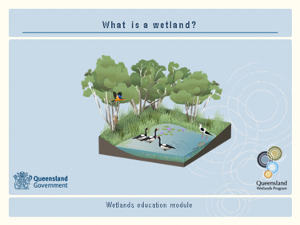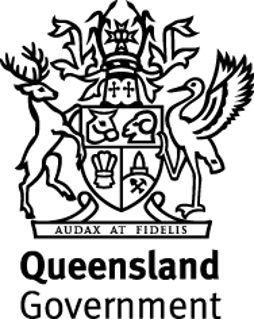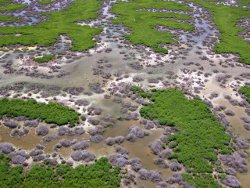|
|
Wetland definitionThere are several different definitions of wetlands in Queensland, mainly due to the manner in which legislation has developed over time. The definitions used in Queensland are available in the Queensland Wetland Definition Guideline. Further information
Quick facts
It is not easy to give a clear definition of what wetlands actually are. They are neither just land, nor just water as they can actually be both at the same time as well as being able to be seasonally aquatic or terrestrial.[1] The Queensland Wetlands Program wetland definition is outlined below. It is consistent with the Strategy for the conservation and management of Queensland's wetlands but includes 3 points of further clarification on the presence of wetland species and the composition of the substratum. These additional points enable an area to be identified as a wetland for mapping purposes and differentiate it from other areas. Queensland Wetlands Program wetland definition:Wetlands are areas of permanent or periodic/intermittent inundation, with water that is static or flowing fresh, brackish or salt, including areas of marine water the depth of which at low tide does not exceed 6 metres. To be a wetland the area must have one or more of the following attributes:
Some examples under the definition above could include:
The definition above excludes:
Wetland on-line education modules A series of on-line education modules, including What is a wetland?, has been prepared as a resource for people who want to learn more about wetlands. Users can download and use the contents of this education module to meet their learning and training needs. This information should be used in conjunction with information found on this website. This resource outlines the key principles of a wetland definition and should not be used for statutory purpose. References
Last updated: 11 October 2023 This page should be cited as: Department of Environment, Science and Innovation, Queensland (2023) Wetland definition, WetlandInfo website, accessed 8 May 2025. Available at: https://wetlandinfo.des.qld.gov.au/wetlands/what-are-wetlands/definitions-classification/wetland-definition.html |

 — Department of the Environment, Tourism, Science and Innovation
— Department of the Environment, Tourism, Science and Innovation


